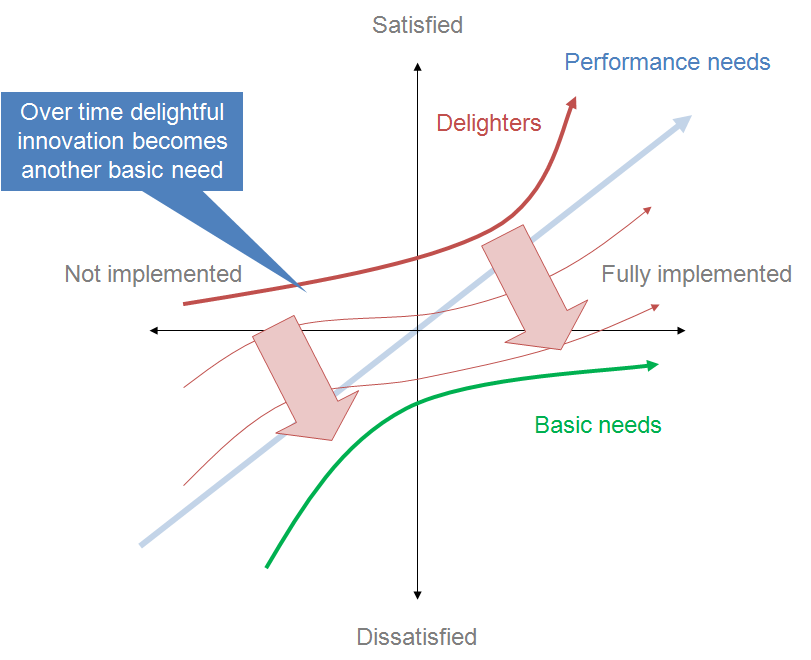Community banking is built on service. Being the cornerstone, sometimes literally, of the neighborhoods you serve is the start of becoming essential and irreplaceable in your customers’ lives. The empathy and insight from that level of closeness can drive the market-leading growth and customer love that everyone aspires to.
Enter the Kano model. Created by Professor Noriaki Kano, the Kano model helps to qualify customer preferences and how the characteristics and features of your offerings meet or fail to meet those expectations. You can classify these into three categories.
Basic needs: This is table stakes. Without it, you’re not a contender. Today this is a functioning mobile app or access to P2P payments (even through a partner). Not having these features will be a show stopper and a reason not to join/quit you for some customers.
Performance needs: These features and characteristics create negative opinions when inferior and scale in the level of satisfaction as they increase. Your rates and fee structure sit here. These things have almost a linear relationship with growth and satisfaction and are often easily comparable to competitors.
Delighters: These things aren’t widely adopted, aren’t missed when absent, but surprise, and as the name says, delight customers when present. They elicit responses like “Oh, that’s cool” or “I really like that.” They are remarkable in that they prompt customers to remark on them. These can be predictive insights that enable you to show up proactively to your customers with the right offer or help before your customers think to reach out to you or your competition.
So the question becomes, where to put effort and resources? Are you pushing a basic need beyond the utility your customers want? Would 10% more ATMs make a difference to your customers or potential customers? How about an extra hour of call center hours of operations on the weekends? Are there delighters, features and offerings that your customer aren’t expecting that you could surprise them with?
The general strategy is to shore up the basic needs, push performance needs to keep up with competition and focus on the delighters that will make you stand out.
Now for the tricky part, it’s all a moving target. Today’s delighters become tomorrow’s performance needs and become next week’s basic needs. This is the deflationary effect of technology. As things get better, people’s expectations go up. Even when there isn’t a lot of change, the Hedonic treadmill ensures no matter how great something is, people will get used to it.
You have to keep talking with and listening to your customers. Doing this explicitly, directly or through your customer’s behavior/in your data, is the path to relevance and creating not just satisfied clients but real fans and champions.
